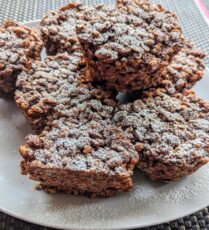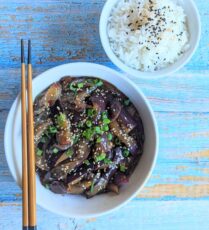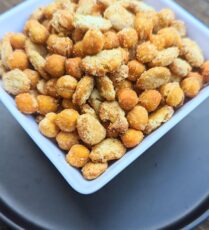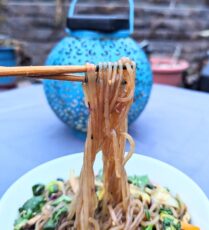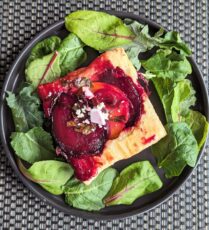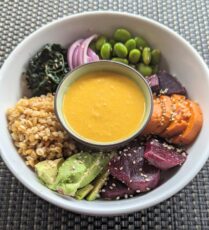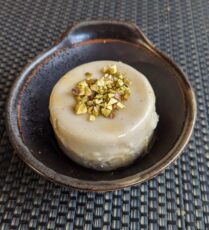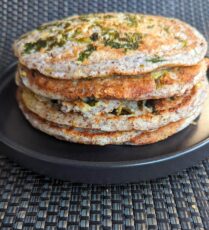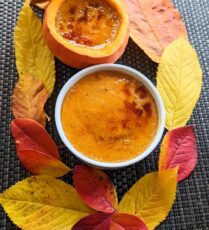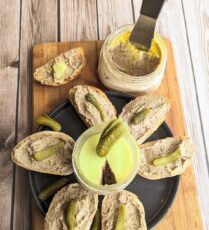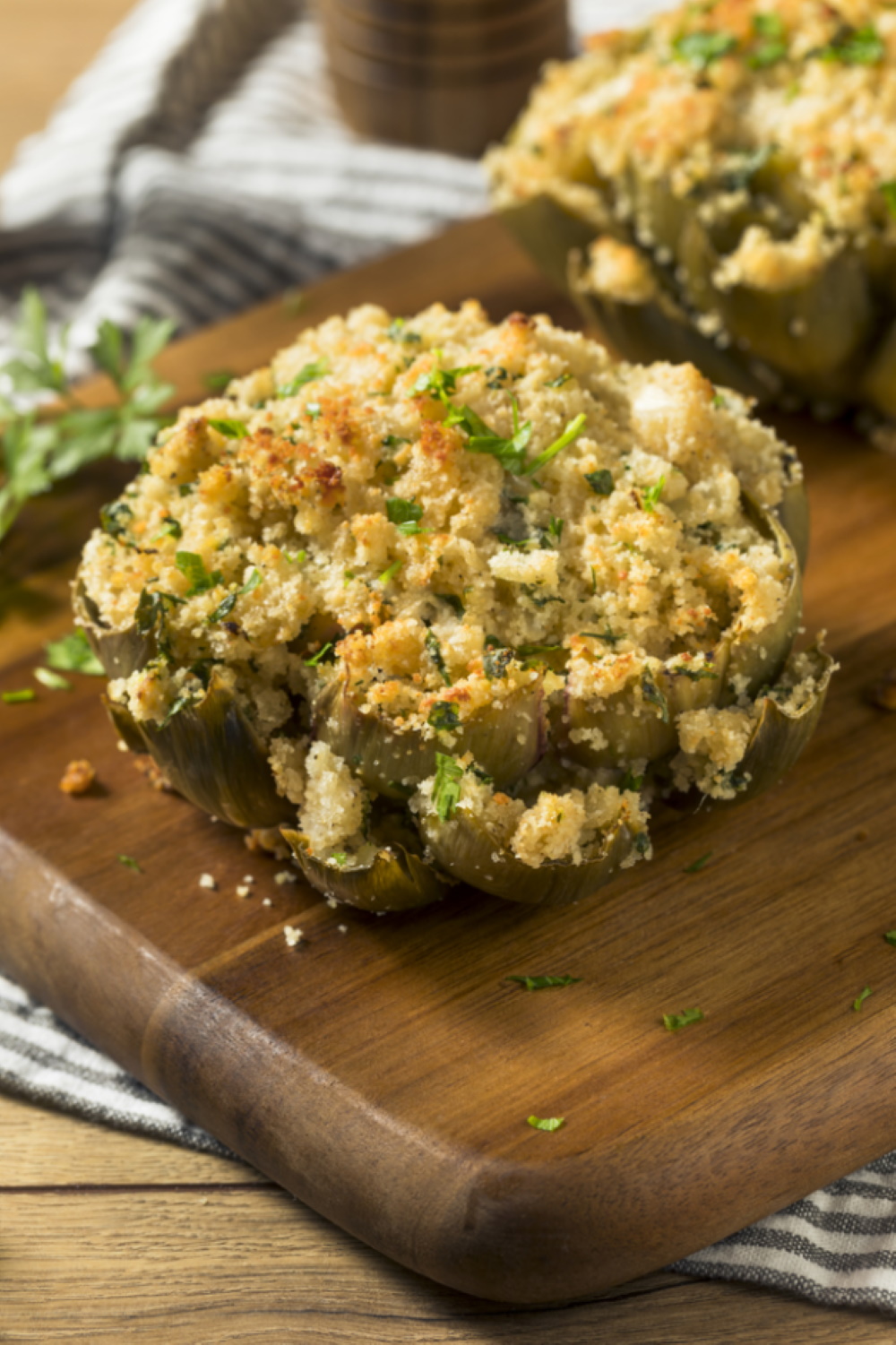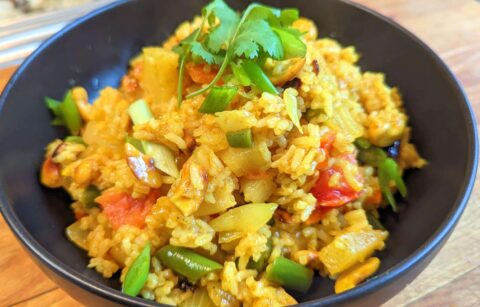Even though we are living in very uncertain times, there is one thing we can always count on… Mother Nature’s regular seasonal gifts. This is the time of year when artichokes are abundant and affordable! I remember as a child thinking the first time I ate a whole artichoke that it was a lot of work for a little food! I have since discovered fun ways to incorporate canned artichoke hearts in many dishes. It was after finding out how nutritious and good for our health artichokes are that I developed a true appreciation for them. They may be a little rough on the outside but they come with a great heart! Did you know that artichokes are essentially a thistle that only produces fruit once a year!
Where do they come from
The first written mention of artichokes dates back to the 8th century BC by the poet Homer. It was grown in the Mediterranean regions and thought to have many health benefits like being a diuretic, a breath freshener, an aphrodisiac, and even a deodorant! It was brought to the US by European emigrants in the 1800s.
TIME FOR TRIVIA:
Which US state is the #1 producer of artichokes? (answer at the end of the article)
1. Florida
2. California
3. Georgia
4. Hawaii
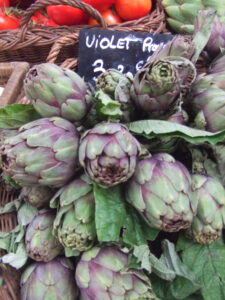 Types of artichokes
Types of artichokes
Turns out there are over 18 types of artichokes! Most of them are heirloom so you are most likely to find only 3-4 types in your local grocery stores or farmer’s market when they are in season:
1. Large rounds called “globe” artichokes. The best candidate for stuffing!
2. A smaller elongated type with some purple called “Violetta”.
3. Jerusalem artichokes which look more like fresh ginger root than an artichoke!
I have also tasted a Romanesco and imperial star and you can tell the difference.
Is everything eatable?
Steamed or boiled artichoke leaves and hearts (a.k.a. choke) is the best and only part to consume.
If you grow your own artichokes you could also use the stem. Just peel it first to expose the lighter fiber and roast or steam.
Discard the fuzzy part on top of the heart. Never try eating it as you could choke on it.
The trick with artichokes
Undercook them and you get something tough and stringy.
Overcook them and you get something mushy and slimy!
Cook perfectly and you get something smooth and creamy. Best achieved with roasting!
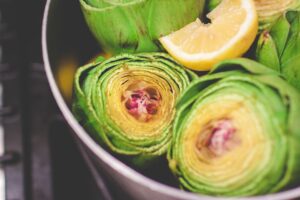 How to prepare artichokes
How to prepare artichokes
Cut off the bottom to remove the stem and allow it to sit properly on a plate.
Cut off the very top because it is too tough to eat.
Trim the tip of the leaves with a scissor to remove the tiny thorns and make it safer to handle.
You could rub a little lemon to prevent it from turning brown.
Boil Vs Steam Vs Roast
1) Boiling artichokes
Cover 1/2 of the artichokes with water and some salt. Bring to a boil then simmer covered for 20-40mn or until the leaves pull off. Drain and cool a little before eating so that you can handle removing the leaves.
Pros: one pot, it only takes 30-35mn
Cons: tends to produce water-logged artichokes and most of the nutrients are in the water!
2) Steaming artichokes
Fill a pot with a few inches of water with 1tsp of salt.
Place artichoke in a steam basket and cook covered on medium-high for about 20mn.
Pros: tender but not water-logged and most of the nutrients are still in the artichoke.
Cons: none
3) Roasting artichokes
Oven at 425F. Depending on the size of your artichokes, you can place them whole stem down or cut them in half on a baking dish. Open up the center part so that you can drizzle olive oil, seasonings. Bake
Pros: adds a little smokiness, brings the flavors to perfection and most of the nutrients are still inside.
Cons: none, this is one the best way to prepare them
What does it taste like?
It depends on the preparation:
Steamed & boiled: mild and nutty
Roasted: it takes on a light smoky flavor
Artichokes have a milk bitter taste that comes from a compound called cynarin.
Interestingly enough, whatever you eat right after eating an artichoke will taste sweet.
Are artichokes healthy?
They sure are! Artichokes are packed with fiber (10 grams), mostly insoluble which means that the fiber goes through your digestive system without absorbing water. Visualize a little scrub brush gently cleaning your inner pipes! Who doesn’t need this?
High in vitamin C, K, fiber, folate. They are filled with polyphenols which makes them a great source of antioxidants. They are also a natural diuretic and they help balance blood sugar levels. Not bad for a thistle!
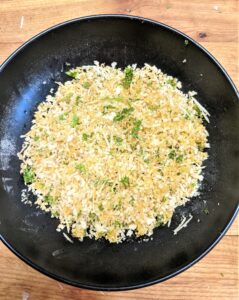
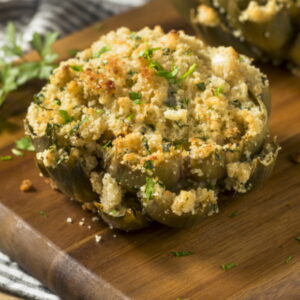
Roasted Stuffed Artichokes
Equipment
- baking dish
- Steamer
Ingredients
Stuffing
- 2 cups bread crumbs
- 1 cup cooked rice optional but recommended
- 1/2 cup tomato sauce optional but recommended
- 1/3 cup fresh basil
- 1 cup shredded vegan cheese
- 1 tbsp garlic powder
- 1 cup chopped scallions
Instructions
Prepare the artichokes
- Remove the stem and trim the top of each artichoke.
- Using a scissor trim the tiny thorns from the outer leaves
- Rub a little lemon over to the leaves to prevent browning.
Prepare the stuffing
- Mix the breadcrumbs with the shredded vegan cheese, minced fresh basil, garlic powder, salt and pepper.

- Drizzle some olive oil over the breadcrumbs and gently mix.
- In a separate bowl, mix the cooked rice with the tomato sauce, chopped green onions, salt, pepper
Putting it together
- Place the artichokes on a baking sheet
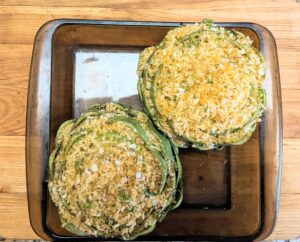
- Remove the middle section, leaves, fuzz and carefully spoon the rice stuffing.
- Gently pry open the outer leaves to make space for the bread stuffing.
- Start with some of the breadcrumbs mix pushing down through the leaves. You can tap down to make space.
- Drizzle with some olive oil.
- Continue with the rice mix pushing down in between all the leaves.
- Top with the remaining breadcrumbs in the middle section and little more olive oil.
- Taste the breadcrumbs and add more salt and pepper if needed.
- Add a few inches of water with 1 tsp of salt.
- Cover tightly with aluminum foil.
- Bake at 375F for 45mn.
- Remove foil and remove a leaf to check if it is done. It should come easily come off.
- Optional: you can add a little more vegan cheese
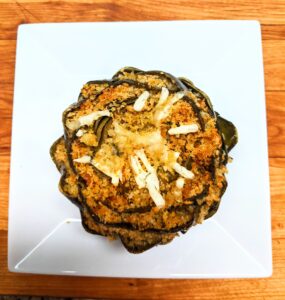
Notes
Nutrition
Trivia answer: California! Castro Valley grows 99% of all artichokes in the US.


